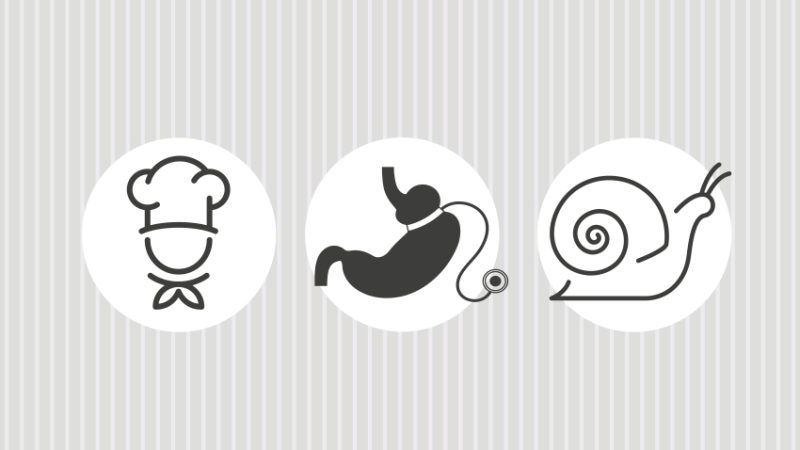Nonsense verse – A gloriously silly KS3 poetry session could have serious benefits for your learners

Take your class on the Ning Nang Nong where the cows go bong, and go where the swivy toves gyre and gimble in the wabe

Nonsense may be shunned as a rule, but it plays a respected role in poetry, enabling entertaining routes to fantasy.
What’s more, the challenge of creating nonsense verse offers a wealth of learning opportunities. These guidelines will help you launch your students in this irresistible and invaluable poetic genre.
What is nonsense verse?
Your mind may already be buzzing with examples, like Spike Milligan’s ‘On The Ning Nang Nong’ – where the cows go bong, or Lewis Carroll’s ‘Jabberwocky’ – where the swivy toves gyre and gimble in the wabe, but how will you define it for your class?
In a nutshell, nonsense verse combines poetic form with illogical or meaningless language to create a brain-teasing mix of normality and absurdity. It doesn’t have to rhyme, but needs pattern and rhythm for framing. Other definitions are available online, together with numerous examples.
What are the learning opportunities?
Here are just a few of the educational and developmental benefits of composing nonsense verse: it stretches linguistic dexterity and literacy skills, unleashes imagination, sparks creativity, motivates learners, and offers scope for both individual and collaborative work.
At the sharing stage, it also develops presentation skills and self-confidence. Paradoxically, nonsense-writing also calls for ordered thinking, while producing mind-boggling and often hilarious images – ideal for getting everyone on board and busy!
Introducing the genre
So, where to start? Writing illogical lines is surprisingly hard, even at KS3, so build ideas and techniques gradually, extending the challenge through homework or a second session.
But bring on the fun straight away: tell your students this is to be their craziest poetry lesson ever. Say you want them to write nonsense, explaining – before they faint – that you mean nonsense verse: a type of poetry.
Quote from a well-known rhyme, like ‘On The Ning Nang Nong’, to put them in the picture. Perhaps they can recite the rhyme for you.
But they will need a broader understanding of the genre before crafting their own nonsense, so introduce the term with a simple definition, and prompt for further examples they may have come across.
You might fish for ‘Jabberwocky’, Edward Lear’s ‘The Jumblies’, or even the old nursery rhyme ‘Hey diddle-diddle’. Quote examples yourself, inviting interpretations and comments.
Now zoom in on a common technique – made-up words. Roald Dahl’s novels provide a rich source of examples, especially The BFG, with its famous ‘snozzcumbers’ and ‘delumptious frobscottle’. Can your students cite others? You could also remind them of ‘Supercalifragilisticexpialidoceous’ in Mary Poppins. Can anyone invent a word on the spot?
Warming up
Read and discuss a sample extract (see ‘suggested resources’). Pupils may notice that some of the invented words sound normal, yet have no meaning, or that the characters do uncharacteristic things, or that the format is normal so the abnormal words come as surprises. Discuss how the normal elements highlight the abnormal ones.
Tell the class you have some silly exercises for them, to prepare them for the serious business of nonsense-writing proper. (This news should have everyone hooked.) The two games below will serve well. Provide rough paper for jottings.
1. Invent words Introduce this with some examples, such as ‘brillig’ or ‘mimsy’ in ‘Jabberwocky’. Then let each pupil pick a letter card from a container and work in groups to invent words with them. No meanings are needed.
2. Present objects in inapplicable ways Read some examples of this, such as the trees going ‘ping’ or the teapots going ‘jibber jabber joo’ in ‘On The Ning Nang Nong’.
Name an object – say ‘table’ – and invite descriptions that don’t apply, such as ‘bouncing’, ‘shouts’ or ‘liquid’. Now pupils can try this with other items.
Invite feedback from each group for each exercise, making sure everyone contributes at some point.
Independent verse-writing
With minds and language loosened up, your class are now ready to compose their own nonsense. Provide a simple theme – say ‘A country walk’, and offer an opening line: ‘The sun was ___ing and the birds were ___ing’ ,or: ‘Strolling down the lane, I saw a ___’. Elicit a few suggestions to set the ball rolling, then leave them to it.
Check individual progress, prompting, guiding, encouraging – and laughing! Once verses are flowing, push for embellishments, such as rhyme, alliteration and a final twist. Remind them to keep formats and rhythms tight, starting a new line for each phrase. Encourage them to tap the rhythm, deleting, changing or rearranging words that don’t fit.
Half the fun of composing nonsense is sharing it, so let everyone read out from their work, a group at a time. By praising all attempts, you will inspire a positive approach to writing in general. Finally, a call for illustrations by next lesson will reinforce today’s message that poetry can be fun.
Follow-on challenge: word-chopping
Any theme will do; we’ll take ‘fruits’ here. Elicit fruits with two or more syllables, such as ‘raspberry’ and ‘pineapple’. Now ask for fruits in which the first syllable makes a word on its own, like ‘rasp’ in ‘raspberries’.
Here are some more: satsuma, ap(e)ricot, grapefruit, strawberry, gooseberry and ‘pineapple’. Help pupils concoct ludicrous lines by using the stand-alone words separately, as in these examples:
The grape’s got out of the grapefruit. The ape has eaten the apricot. Who’s sat on the satsumas?
Let pupils experiment with the concept, then offer a format, such as ‘Who put the ___ in the ___?’ and see where it takes them. Four- or eight-line lists will flow particularly well.
When the giggles have died down, invite more nonsense-drafting ideas. If none are forthcoming, suggest stringing together alliterative words, like terrifying teachers tap-dance on ticklish tomatoes, or writing in Spoonerisms (spiting in wroonerisms). Ask for another crazy creation by next lesson.
Suggested resources
- Container of letter cards or Scrabble letters
- Two or more nonsense rhymes, such as Lewis Carroll’s ‘Jabberwocky’ and Spike Milligan’s ‘On The Ning Nang Nong’ (excerpts below)
- Whiteboard
- Paper: rough, lined and plain (for illustrations)
- For reference (optional): The Puffin Book of Nonsense Verse, Puffin Books, 1996, or similar
Excerpts from texts mentioned:
From ‘On the Ning Nang Nong’:
On the Ning Nang Nong Where the Cows go Bong! and the monkeys all say BOO! There’s a Nong Nang Ning Where the trees go Ping! And the tea pots jibber jabber joo.
From ‘Jabberwocky’:
`Twas brillig, and the slithy toves Did gyre and gimble in the wabe: All mimsy were the borogoves, And the mome raths outgrabe.
Kate Williams is a children’s poet and workshop leader. Email her at katewilliams.poetry@gmail.com.












